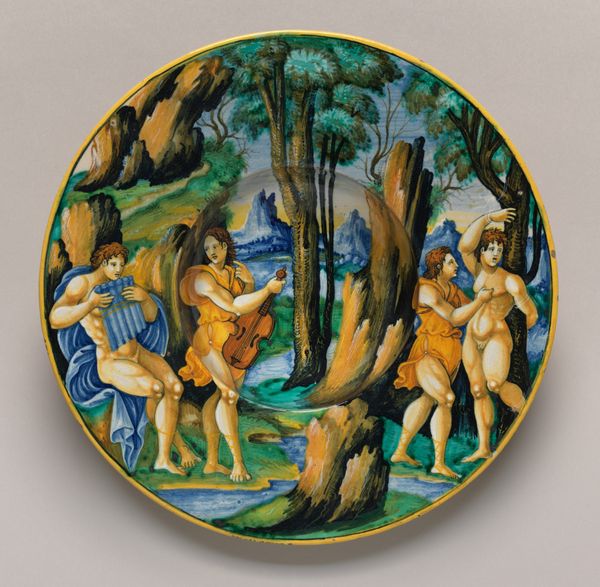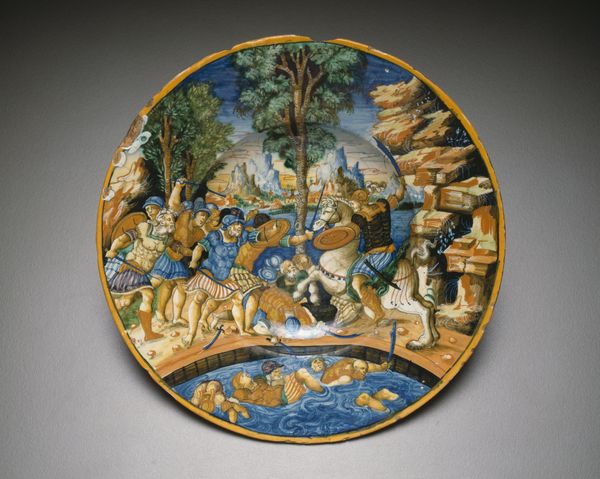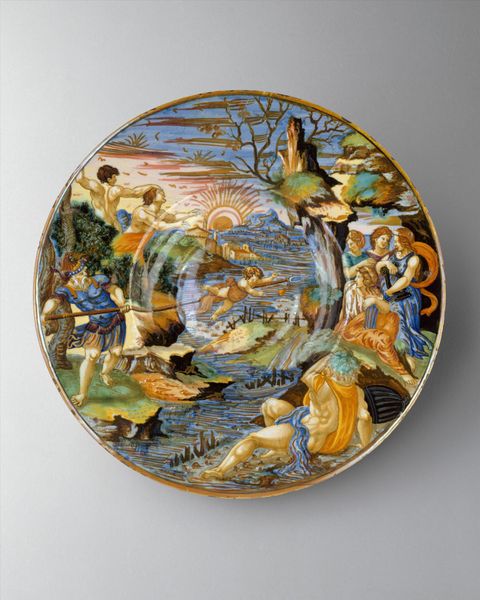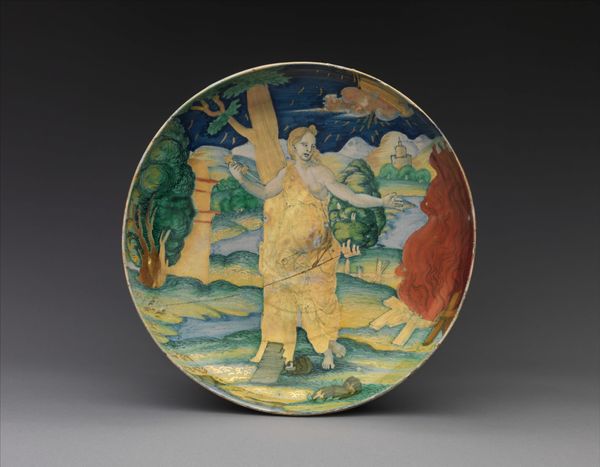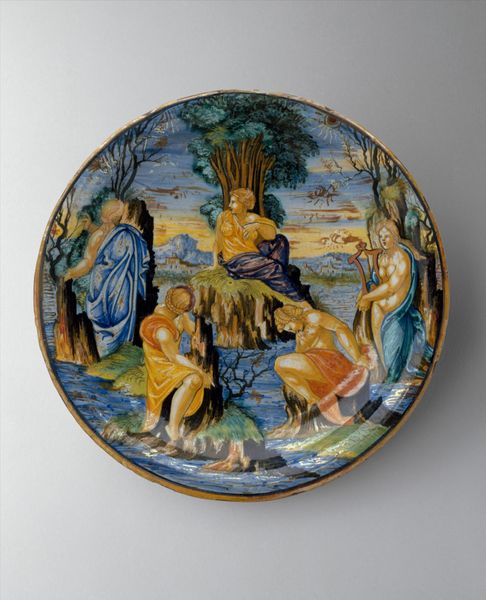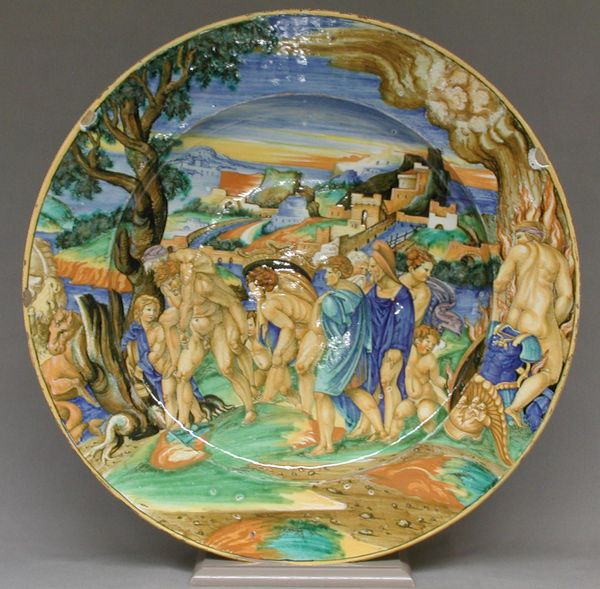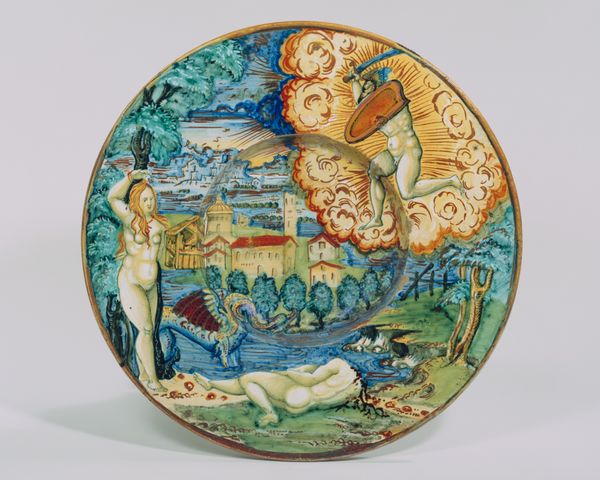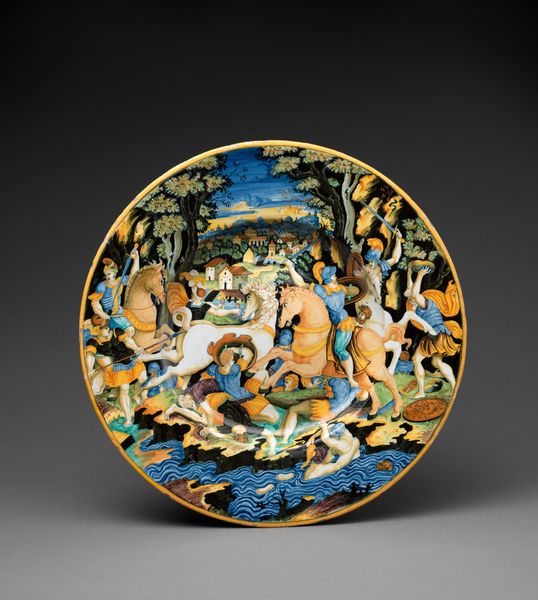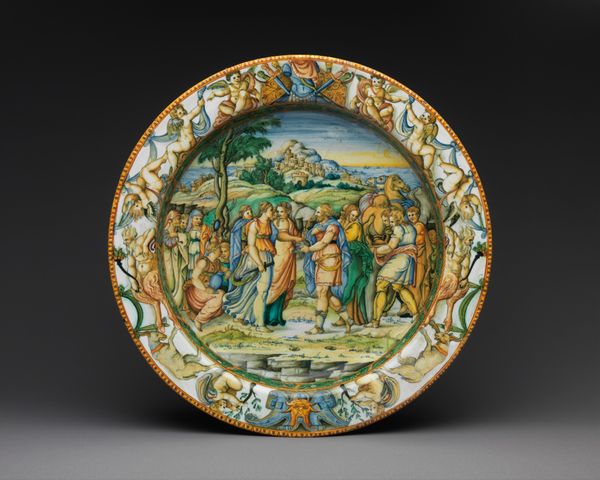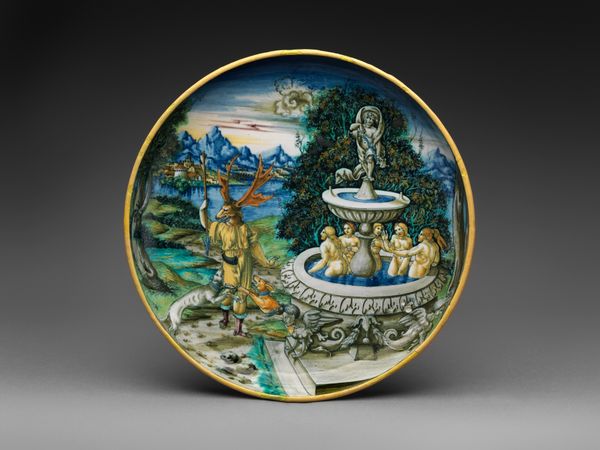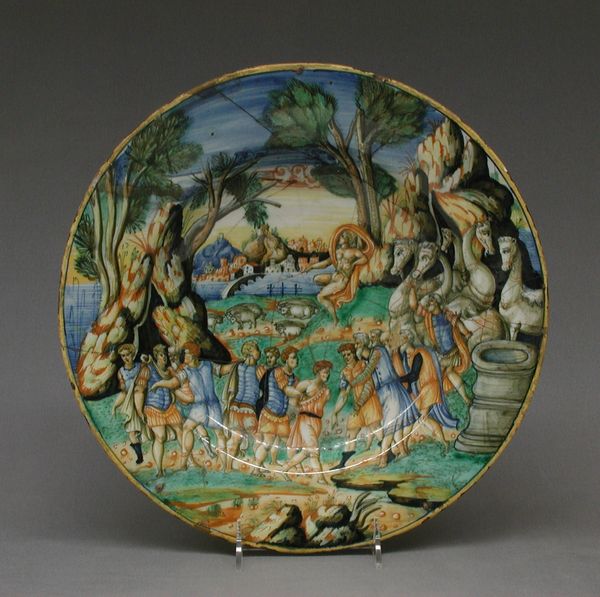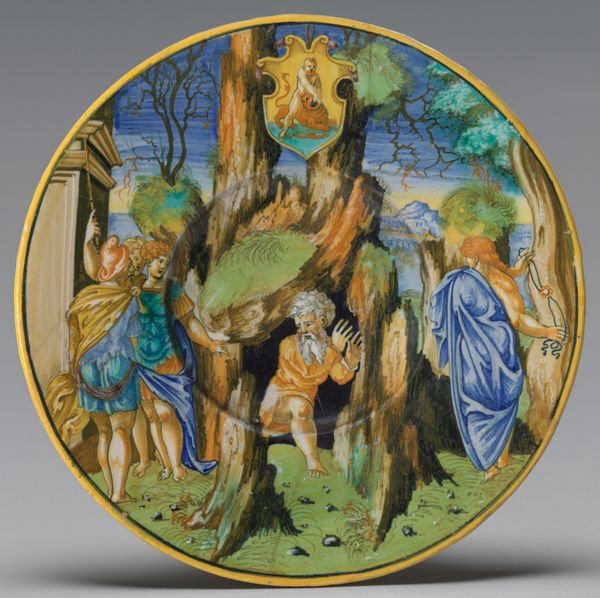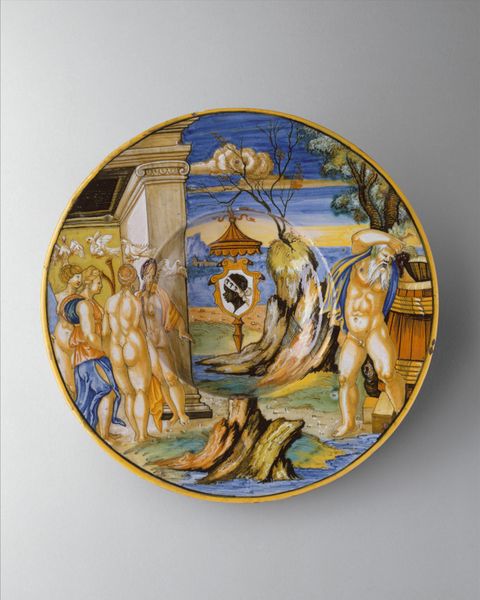
relief, ceramic, earthenware
#
narrative-art
#
relief
#
ceramic
#
earthenware
#
ceramic
#
earthenware
#
genre-painting
#
history-painting
#
decorative-art
#
italian-renaissance
Dimensions: Diameter: 30.5 cm (12 in.)
Copyright: Public Domain
Curator: Right, let's talk about this gorgeous plate. What we have here is a piece from the Urbino Potteries, dating back to around 1545. It's an earthenware creation, "Plate with Moses Striking the Rock," and it's just a fascinating example of narrative art from the Italian Renaissance. Editor: My goodness, what a busy scene. At first glance, I am overwhelmed, I don't even know where to look. It's all flowing water and reaching hands, with this cool forest in the background, that offers some strange feeling of relief. And... is that really Moses in the foreground looking exasperated with this crowd? It is a snapshot of organized chaos, and I love it! Curator: Indeed. It depicts the biblical story where Moses, directed by God, strikes a rock to provide water for the Israelites in the desert. Urbino pottery workshops were known for these istoriato wares, dishes painted with detailed narrative scenes, often drawing from religious or classical sources. They were luxury goods, showing the commissioner's education and wealth. Editor: It strikes me how theatrical this is, as if the plate wants to invite the viewer in the show! With all the expressive gestures and swirling motion—it makes me wonder, how was this used? I wouldn't want to drop it after all this meticulous painting, and it feels almost sacrilegious to serve food on a biblical scene! Curator: Exactly! These weren't your everyday plates. They were meant for display, for conversation. Imagine the wealthy patron showing off his knowledge of scripture and classical tales. The fact that it's functional is almost secondary to its value as a cultural signifier. Editor: It's kind of humorous, isn't it? Turning a vital moment of divine intervention into a dinner plate tableau. Maybe it’s supposed to remind everyone at the table of some message while having dinner. Is that what the original owner thought when it was used in events? Curator: We can speculate that the display of it sent messages of wealth, artistry and learning, indeed. Consider the craftsmanship and the value of that kind of intricate decoration at the time. Editor: Thinking about that, the entire history suddenly feels like I have had the honor of sneaking inside somebody's intimate family affair in sixteenth-century Italy. I like this new, strange familiarity and insight! Curator: Precisely, these objects offer invaluable entry points into the domestic sphere and belief systems of Renaissance society, which is exactly why they're such treasures. Editor: I completely agree, diving deep into the social implications with historical context certainly paints an amazing and fuller picture to appreciate it on so many different levels. Curator: A pleasure to unravel it together, offering, hopefully, some enriching, maybe unheard, perspectives. Editor: As with that, hopefully some exciting ideas to carry on that, for us, very personal treasure hunt.
Comments
No comments
Be the first to comment and join the conversation on the ultimate creative platform.
